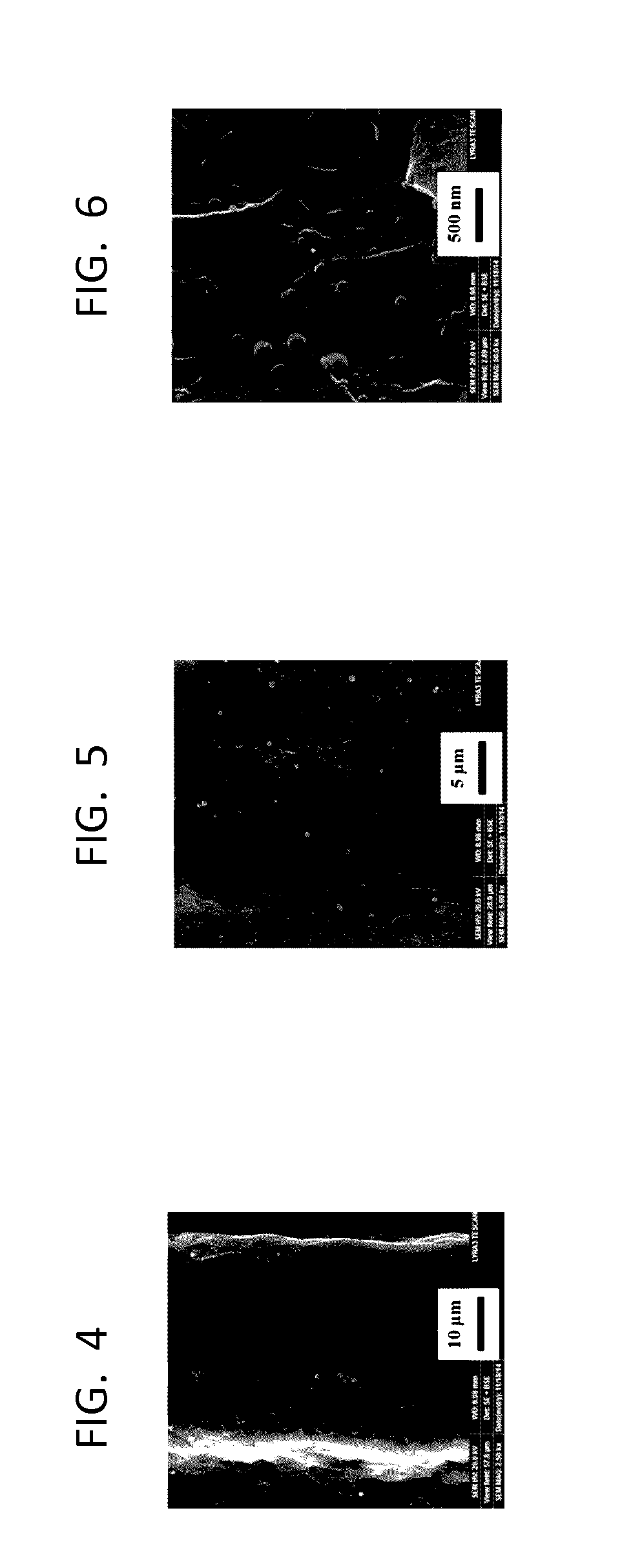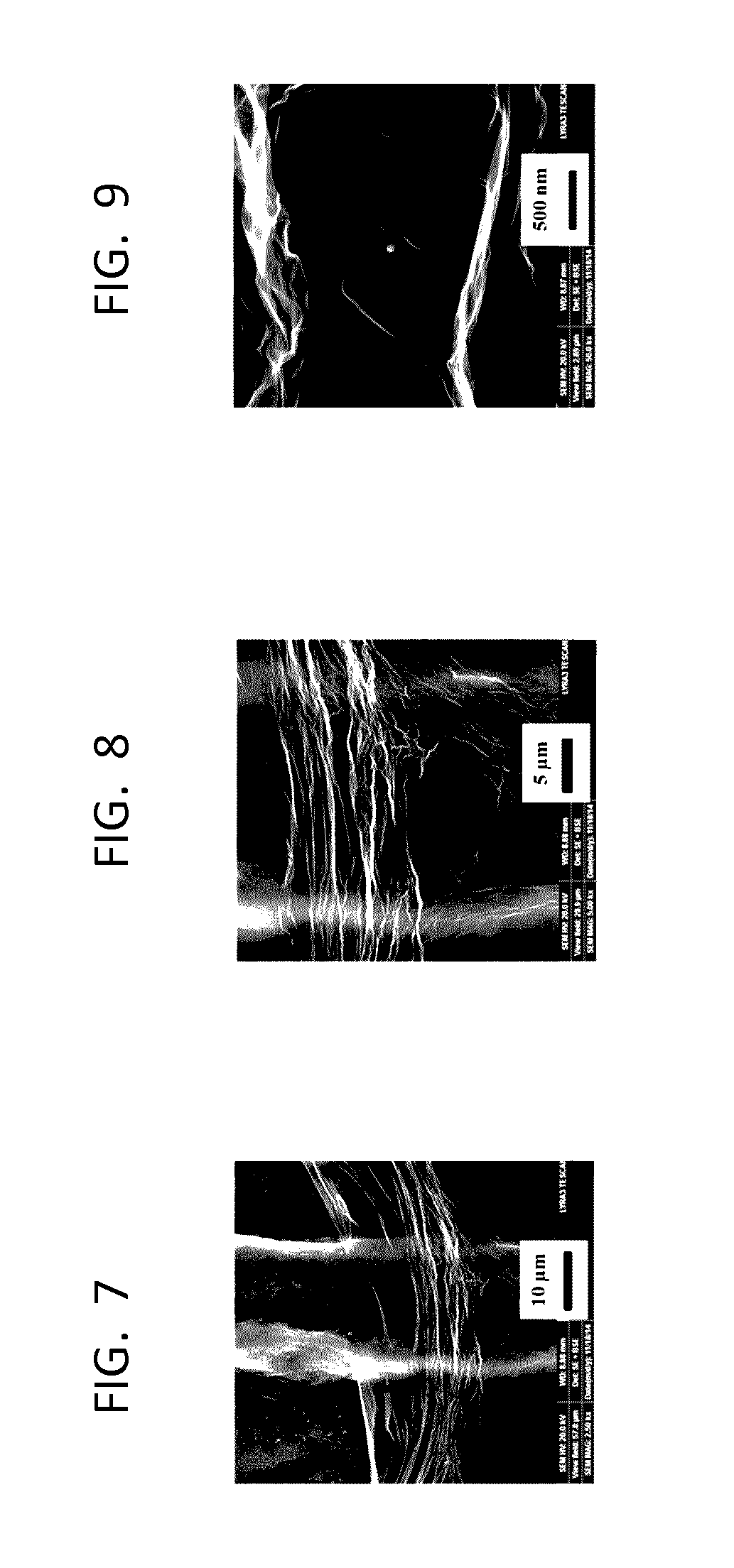Method for detecting l-tyrosine by using graphene-modified graphite pencil electrode system
a graphene pencil and tyrosine technology, applied in the field of graphene (gr)modified graphite pencil electrode system and a method for detecting ltyrosine in a solution, can solve the problems of inability to make tyrosine, inability to process phenylalanine properly, and inability to detect ltyrosine,
- Summary
- Abstract
- Description
- Claims
- Application Information
AI Technical Summary
Benefits of technology
Problems solved by technology
Method used
Image
Examples
example 1
Preparation of the Graphene (GR)-Modified Graphite Pencil Electrode (GPE)
[0087]Graphene oxide (1 mg / mL, Sigma-Aldrich, USA) was dispersed in a 0.1 M acetate buffer at pH 4.8, and a uniform dispersion was obtained by sonicating the solution for 30 minutes. The graphene oxide solution was then transferred into a 3 mL glass cell. The three-electrode system comprising the graphite pencil working electrode (GPE), the platinum wire counter electrode (CHI 115, CH instrument Inc.), and the Ag / AgCl reference electrode (in 3 M KCl, CHI 111, CH instruments Inc.) was inserted through a Teflon cap into the 3 mL glass cell containing the graphene oxide solution. The graphene oxide was electrochemically reduced on the surface of the GPE under a cyclic sweeping potential from −1.4 V to 0.3 V applied at a scan rate of 10 mV / s for 4 cycles. All experiments were conducted at room temperature.
example 2
Morphological and Electrochemical Characterization of the Bare GPE and GR-Modified GPE
[0088]The surface morphologies of the bare GPE, i.e. the graphite pencil base electrode, and GR-modified GPEs were analyzed using field emission scanning electron microscopy (FE-SEM, TESCAN LYRA 3, Brno, Czech Republic). The FE-SEM images were collected from the bare and the GR-modified GPEs at three different magnifications, i.e. 10 μm in FIGS. 4 and 7, 5 μm in FIGS. 5 and 8, and 500 nm in FIGS. 6 and 9, to optically image the electrode surface. FIGS. 4-6 and FIGS. 7-9 show the bare GPE and GR-modified GPE, respectively. A comparison of FIG. 4 showing the bare GPE surface at 10 μm magnification with FIG. 7 showing the GR-modified GPE surface also at 10 μm magnification indicated the formation of the graphene layer on the GPE surface. FIG. 7 reveals that a small region uncovered by graphene was present on the GR-modified GPE surface, whereas the rest of the GR-modified GPE surface was covered by gr...
example 3
The Effect of pH on the Detection of L-Tyrosine in a Solution Using the Graphene-Modified Graphite Pencil Electrode System and Square Wave Voltammetry (SWV)
[0094]The effect of pH on the detection of L-tyrosine in a solution using the graphene-modified graphite pencil electrode system and square wave voltammetry was examined in a PBS solution (0.1 M) containing 50 μM of L-tyrosine at a pH ranging from 6.5 to 8.0 determined by a pH meter (Accumet® XL50), with the results presented in FIG. 18. pH significantly affected the oxidation peak current of L-tyrosine as well as the peak height corresponding to the magnitude of the peak change in I occurring at the oxidation peak potential of L-tyrosine in the square wave voltammograms shown in FIG. 18, where I is the difference in current between the two current measurements during each square wave cycle, one at the end of the forward pulse, and the other at the end of the reverse pulse. In addition to the oxidation peak current presented in F...
PUM
| Property | Measurement | Unit |
|---|---|---|
| thickness | aaaaa | aaaaa |
| voltage | aaaaa | aaaaa |
| frequency | aaaaa | aaaaa |
Abstract
Description
Claims
Application Information
 Login to View More
Login to View More - R&D
- Intellectual Property
- Life Sciences
- Materials
- Tech Scout
- Unparalleled Data Quality
- Higher Quality Content
- 60% Fewer Hallucinations
Browse by: Latest US Patents, China's latest patents, Technical Efficacy Thesaurus, Application Domain, Technology Topic, Popular Technical Reports.
© 2025 PatSnap. All rights reserved.Legal|Privacy policy|Modern Slavery Act Transparency Statement|Sitemap|About US| Contact US: help@patsnap.com



